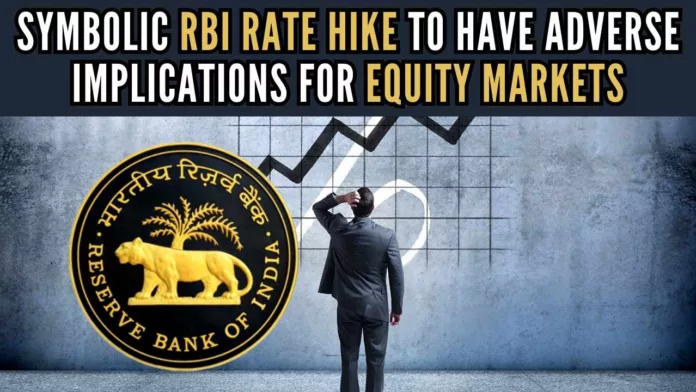
RBI views inflation primarily as a monetary phenomenon and monetary policy action is needed to control inflation, regardless of supply or demand
The extent of the jump in food inflation and other upside risks to inflation can compel the Reserve Bank of India (RBI) to go in for at least a symbolic rate hike to anchor inflationary expectations, said Sujan Hajra, Chief Economist and Executive Director, Anand Rathi Shares and Stock Brokers.
This is even more likely because the RBI views inflation as primarily a monetary phenomenon requiring monetary policy action to control inflation, irrespective of whether it is supply or demand sided.
These have adverse implications for the financial markets, he said.
The case for a rate cut in the next 12 months seems to have vanished with adverse consequences for the financial markets, including debt and equity.
Despite upwardly revising inflation forecasts, the RBI stayed away from outright tightening the monetary policy in August under the presumption of food inflation being transitory, Hajra said.
Apart from high food inflation, the sharp jump in global crude oil and grain prices are serious concerns. While edible oil inflation is currently extremely benign, the global El Nino effect can change the situation. Progressive softening of core inflation is a silver lining, he said.
At 7.4 percent in July, India recorded the highest inflation in the last 15 months. On an annualized basis, food inflation jumped nearly 70 percent and fuel more than 20 percent, resulting in an over 50 percent jump in non-core inflation. The silver lining included the year-on-year fall in fuel and core inflation, he added.
The year-on-year food inflation jumped from 4.7 percent in June to 10.6 percent in July. While above 200 percent inflation in tomatoes was a major driving force, many other items under fruit and vegetable recorded high inflation chiefly on account of weather disturbances in the recent past.
[With Inputs from IANS]
PGurus is now on Telegram. Click here to join our channel and stay updated with all the latest news and views
For all the latest updates, download PGurus App.
- Myanmar authorities seize 100 Kg methamphetamine, 13 kg of ketamine in southern region - April 28, 2024
- Centre permits export of 99,150 tonnes of onion to 6 countries - April 28, 2024
- Delhi Congress chief resigns, cites party’s alliance with AAP - April 28, 2024










